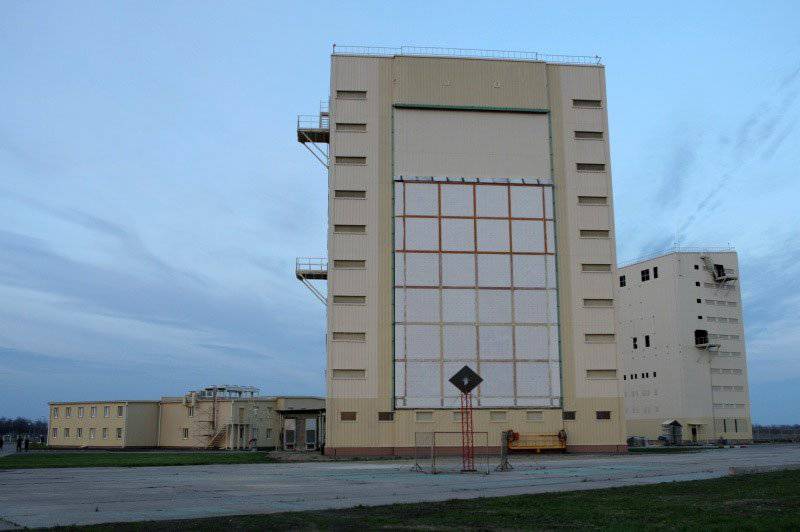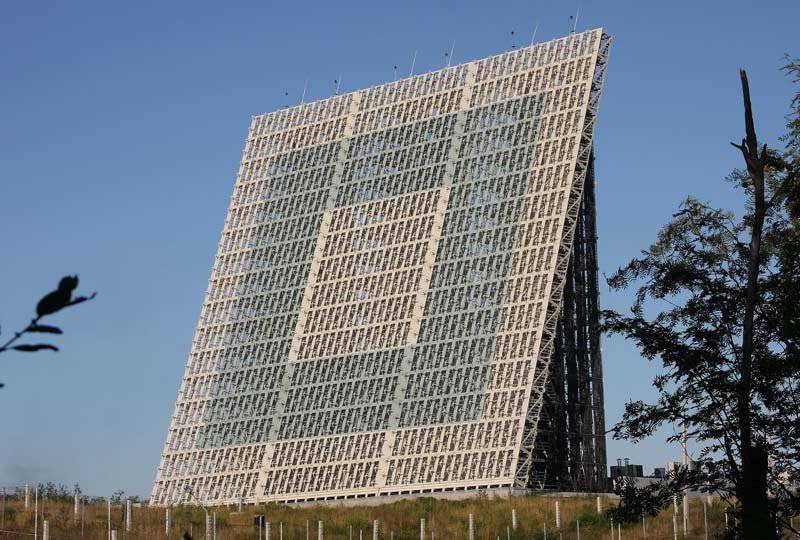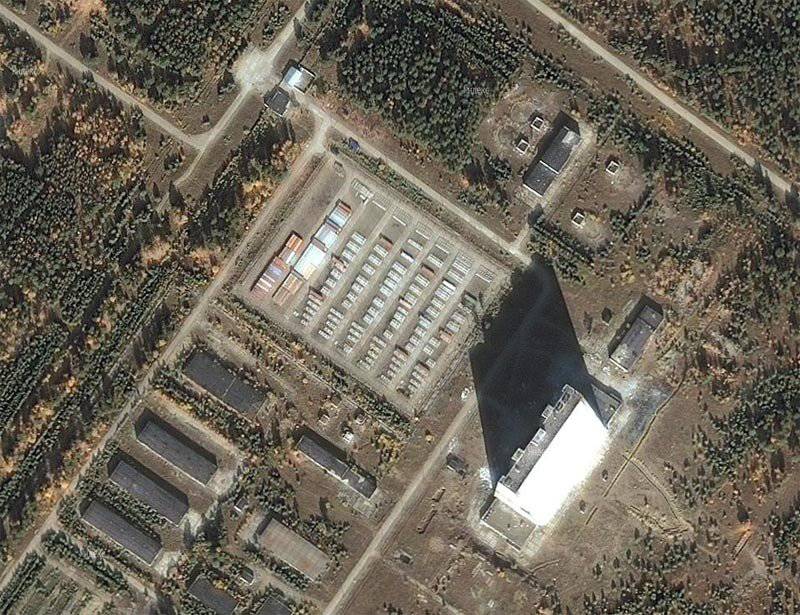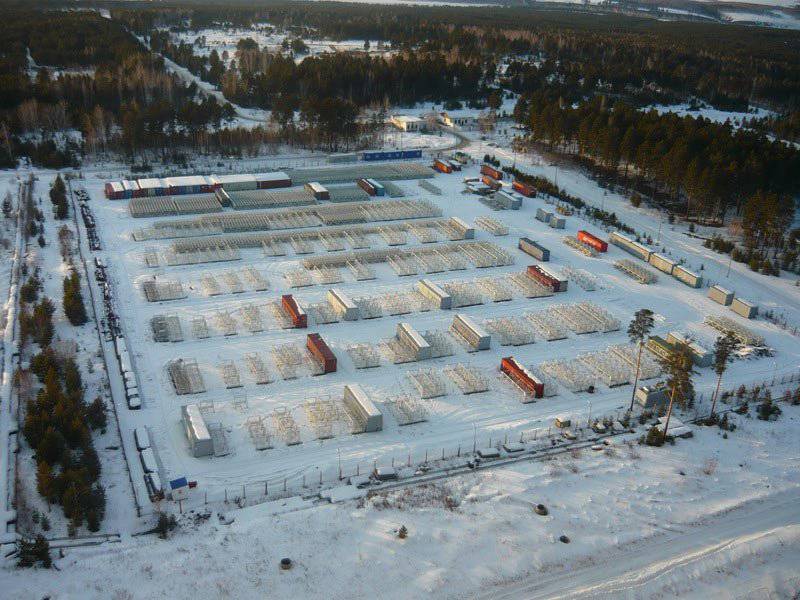Radar stations of early detection of warning systems "Voronezh"
On the Internet and print you can find the wrong name of these stations - over-the-horizon or over-the-horizon radar.

Since December 1, they joined the forces of the Air and Space Defense of the Russian Federation.
The main feature of the radar "Voronezh" - high factory readiness.
The first to develop and put into operation a radar station of the meter range "Voronezh-M". The next development was the radar "Voronezh-DM". The third radar data model is Voronezh-VP.
The first steps to create radar stations with VZG were taken in 1986 year when creating a radar to the "Selenga".
VZG provides the term of mounting of the data of radar stations no more than 18-24 months.
Stations consist of 23-x units of equipment.

Voronezh uses hardware and design solutions that allow assembling a system with characteristics that meet the operational and tactical requirements of the installation site from a set of ready-made factory assemblies. Programmatically and technologically all energy management issues are resolved. Built-in control and high-tech control system reduces maintenance costs.
Attendants are placed in standardized containers that have a system for ensuring temperature characteristics.
Designers have worked the range of cabinets - "Voronezh" has 12 types of cabinets, of which cabinets with receiving and transmitting, power supply equipment and control system AFI - serial. Non-standard cabinets on the radar of the Voronezh 22 unit, they were placed in 3-x containers, which also installed equipment to monitor temperature characteristics.
Receiving and transmitting equipment in the radar of the “Voronezh” early warning service station is located in large antenna complexes VZG. They are ready for transportation and installation units.
The installation of these complexes occurs on the support structures of the quick assembly. This leads to the rapid construction of an active antenna pattern. This block-integrated assembly reduces the losses in the receiving-transmitting paths, reduces the temperature and, in general, gives a high indicator of the efficiency of the antenna device. In addition, this arrangement makes it possible to upgrade. Emitters are located at the end of each container.
The antenna of the Voronezh radar station predominantly uses the method of creating sublattices for reception, which reduces the volume of equipment used, without reducing the characteristics of the beam pattern. The method is implemented on the mutual overlap of the sublattices and the use of special amplitude distributions in them.
The cascades of the transistor performance of transmitting amplifiers in the AFU interact in a "hot collector" manner. This allows the transmission equipment to be cooled with “outboard” air entering through the ventilation equipment, which is part of the technical equipment. This "live" ventilation allowed to abandon the overall systems of thermal stabilization and cooling.
The “hot” air cooling circuit is distributed over all antenna boxes using a unified duct system.
Temperature indicators at the ends of the air ducts of the installed modules are on average no more than 45 degrees. At low temperatures, in winter, the circuit is closed, and warm air goes to the heating of the antenna boxes. Warm air in the circuit is diluted with cold outside air to maintain a certain temperature.

The equipment of the receiving channels has not only the digitization of signals, but also embedded processors for the initial digital processing and verification control of the receiving paths. Such an approach saves Voronezh computing facilities and channels for transmitting information, and reduces the loss of processed signals using digital methods for stabilizing the nonidentity of the used HEADLIGHTS channels.
Digital signal processing occurs at the carrier output frequency with the following selection of quadrature elements, which allowed to qualitatively reduce the loss of processed information.
The computing equipment used for primary secondary processing was performed on a “server” type computer, with an open information processing architecture in real time. The computer is unified on all types of perspective topics. It has two types of processor cells and 2 buses: the “VME” bus and the user bus. Constructive boxing computer - "Euromechanika." Solution performance - up to one hundred billion operations per second. The computer has unlimited possibilities of modernization and capacity. The occupied space is half of the standard cabinet of Voronezh equipment. Consumes 1.5 kW / h. Service is not provided. Warranty life 80 thousands of hours.
Functional and technical management is performed as peripheral coprocessors that are embedded in the hardware, combined with a central co-processor high-speed interface. This made it possible to reduce the volumetric dimensions of the equipment, increased the reliability of the flow of information and functional control.
The Voronezh radar station uses a programmatic adjustment of the potential in the sector responsible for distance, angles and time, and the mode of economy of consumed resources.
Software adjustment of these modes makes it possible to quickly change the energy consumption of the radar in the usual, combat and readiness for combat use of the modes, to equalize the energy consumption in the working sector of the radar.
When installing the head-on radar of the Voronezh-DM RSE near the city of Armavir, for its power supply, a power line with a total length of more than eight kilometers was stretched, communications and roads were built.
A checkpoint was set up at the radar installation site, a base station was installed, water intake facilities, an electrical substation, a fire station, and an underground shelter. The premises had a modern finish. For the personnel of the radar created quite comfortable conditions for living and performing combat missions. For recreation and physical training there is a training tower, a volleyball court and a hundred meters for training the personnel of the fire station. The whole territory is covered and fenced around the perimeter. Planted seedlings of trees and shrubs.
Since the start of construction, the middle of the year 2006, a complex of works on 58 units of construction objects has been carried out. Completion of construction - 2009 year. Contractor - NCT №7 Spetsstroy RF.

The main characteristics of the radar "Voronezh":
- power consumption: "DM" - 0.7 MW, "VP" - up to 10 MW;
- detection range: “DM” 2500-6000 kilometers, “VP” - 6 thousands of kilometers;
- working off targets: "DM" to 500 units.
Modifications of the Voronezh series:
- Radar SPRN "Voronezh-M" was built in 2006 year, the designation 77YA6. It is a low-potential station of the meter range;
- Radar SPRN "Voronezh-DM" was built in 2011 year, the designation 77YA6-DM. It is a mid-potential station decimeter range;
- The radar of the early warning system Voronezh-VP is planned to be completed in 2012 year, the designation 77Я6-VP. It is a high potential broadband station of possibly millimeter range.
Economic indicators of station construction:
- Armavir "Voronezh-DM" - 2.85 billion rubles;
- Pioneer Voronezh-DM - 4.4 billion rubles;
Location of the Voronezh stations:
- Voronezh-M is located in the Leningrad Region, it is on combat duty from 2009, it controls the territory from Spitsbergen to Morocco;
- head Voronezh-DM 2-x modular design, located in the Krasnodar Territory, from 2009 year, is on duty, provides control of the territory from North Africa to Southern Europe;
- 1-I serial "Voronezh-DM", located in the Kaliningrad region, since 2011, is on duty, provides control of the territory of the western direction, duplicates the radar station in Baranovichi;
- Voronezh-VP, located in the Irkutsk region, in 2012, it will take up combat duty, build, provide control over the territory of the south-east direction, plan to install the antenna module in the south direction (2014 year).
Planned construction of Voronezh stations:
- Voronezh-VP near Pechora in 2015;
- Voronezh-VP in the Murmansk region, in 2017;
- “Voronezh-VP” in Azerbaijan, in 2017, the interception of the 2019 year on combat duty.
Information